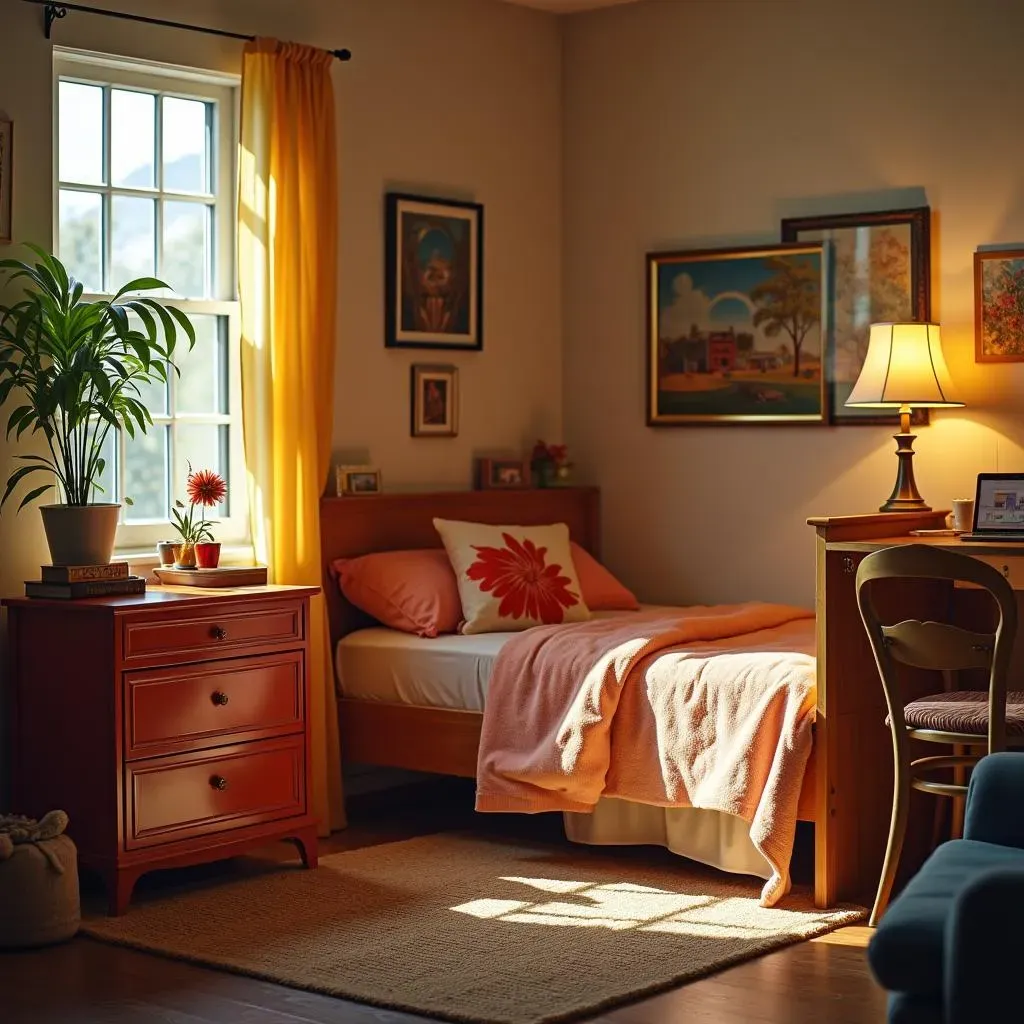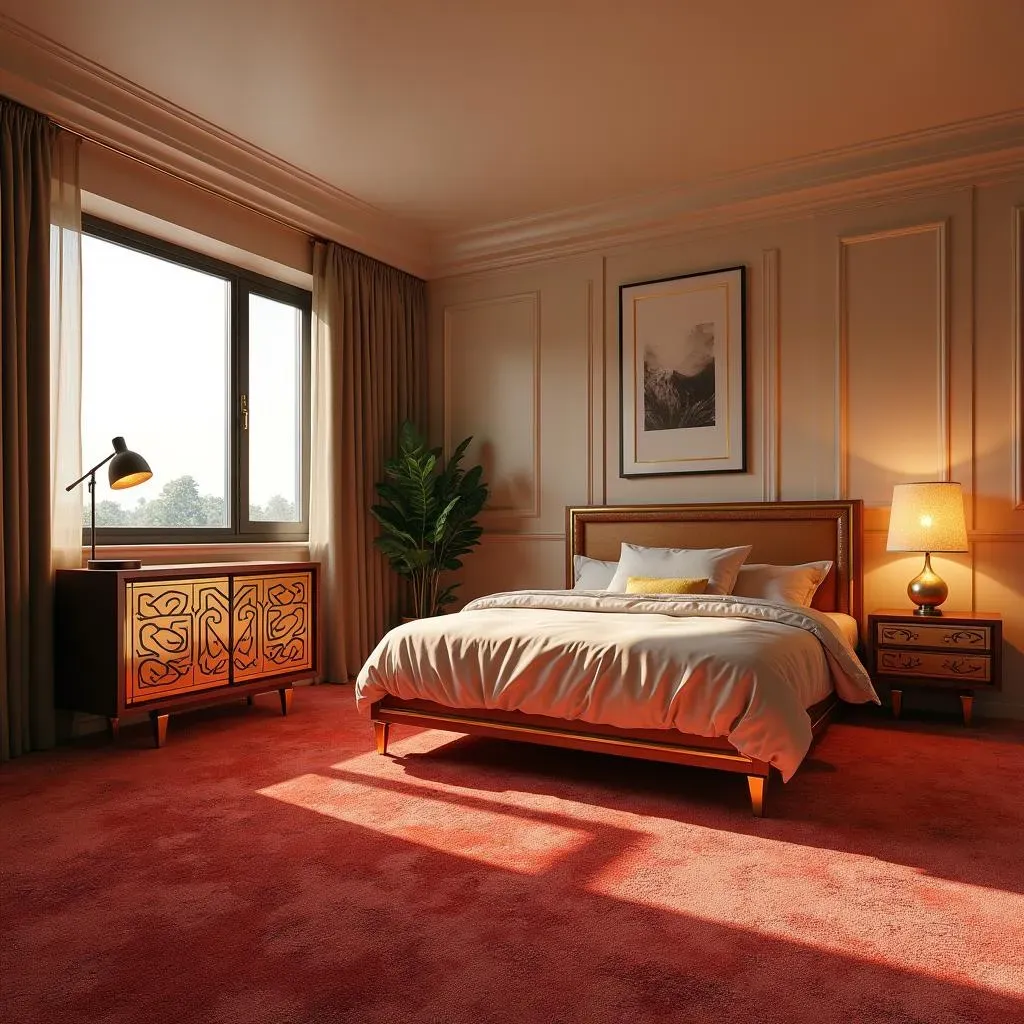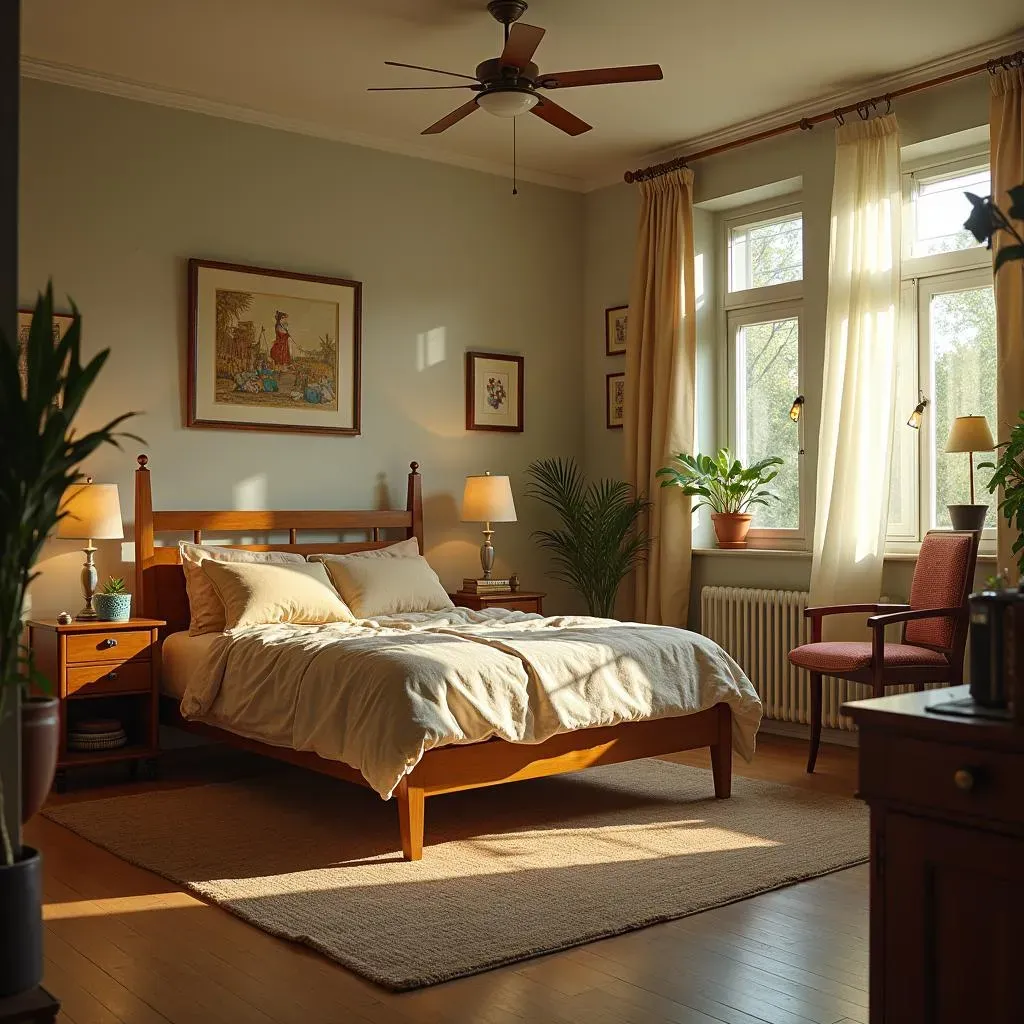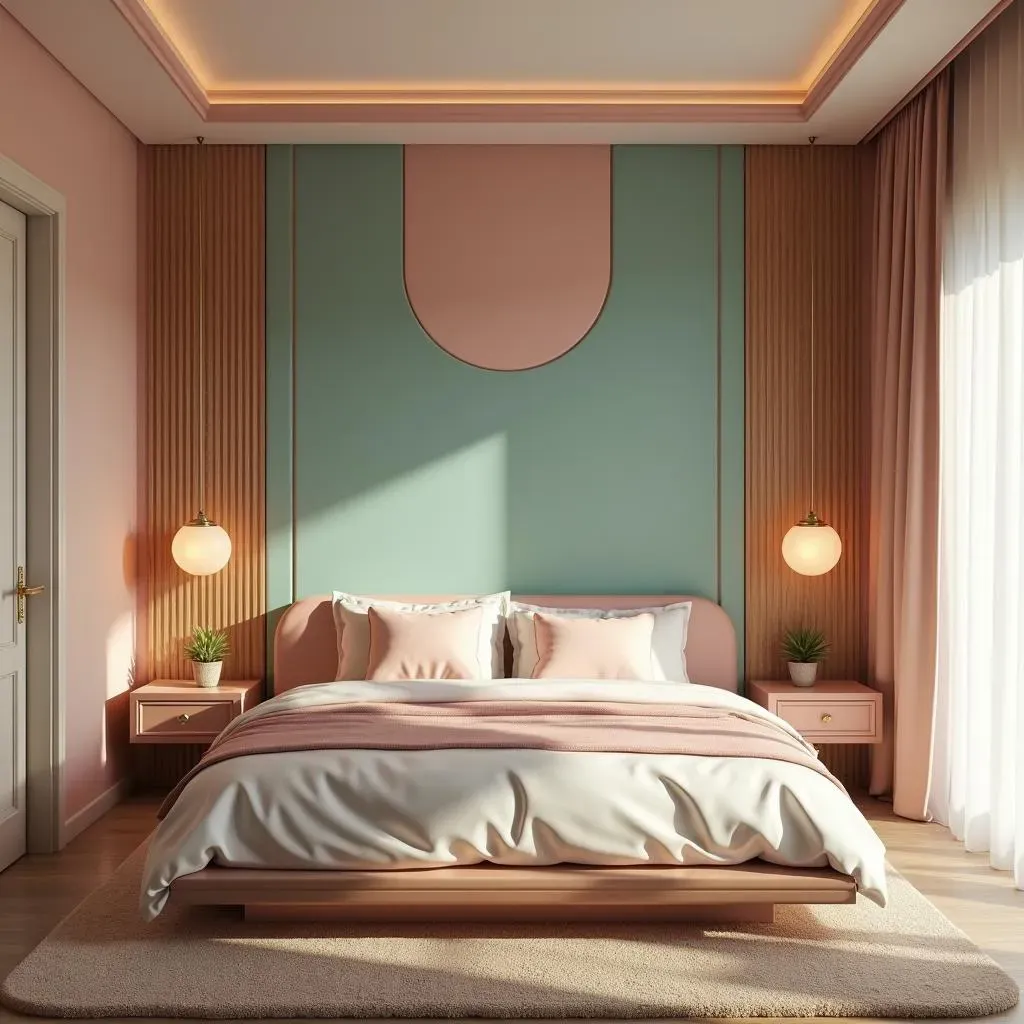Table of Contents
Remember the 80s? Maybe you picture neon, big hair, and shoulder pads. When it comes to interiors, perhaps pastel pinks, teal, and geometric shapes come to mind. But 80s bedroom furniture wasn't just about the loud and the quirky. It was a decade of contrasts, where sleek lacquer met chunky pine, and minimalist lines bumped up against opulent brass. Forget the cartoon version; the reality of 80s bedroom furniture is a lot more varied and, frankly, fascinating.
What Was 80s Bedroom Furniture Really Like?
What Was 80s Bedroom Furniture Really Like?
Beyond the Pastel Haze
Alright, let's talk about what 80s bedroom furniture actually looked like, stripping away the cartoonish versions you might see in movies. It wasn't just a monolithic block of pastel pink and teal. Sure, those colors were around, especially in laminate and painted finishes, but the reality was a lot more diverse. Think about the sheer volume of furniture being made – from high-gloss lacquer sets that looked like they belonged in a Miami Vice episode to solid, chunky pine pieces that felt like they were airlifted from a ski chalet. It was a decade where "more is more" sometimes clashed head-on with attempts at sleek modernity.
Materials and Shapes That Defined the Decade
The materials used in 80s bedroom furniture ran the gamut. You saw a ton of laminate – durable, easy to clean, and perfect for those bright colors or faux wood grains. Lacquer was huge for that glossy, futuristic (at the time) look. Brass accents were everywhere, whether on headboards, dresser handles, or bed frames, adding a touch of perceived luxury. Wood was still popular, but often stained in lighter tones or painted. Shapes could be boxy and geometric, or they could feature curves, arches, and even asymmetrical elements, especially as Post-Modern influences crept in.
Here's a quick look at some common materials:
- Laminate (often in bold colors or faux wood)
- High-gloss Lacquer
- Brass (for accents and frames)
- Pine (chunky, sometimes 'country' style)
- Particleboard (the backbone of many budget pieces)
- Mirrored finishes (for that extra sparkle)
- Rattan and Bamboo (bringing a touch of the tropics indoors)
A Decade of Design Contradictions
What was 80s bedroom furniture really like? It was a bit of a mess, honestly, but a fascinating one. You had designers playing with wild shapes and colors right alongside manufacturers churning out incredibly heavy, traditional-looking sets in oak or cherry stain. There wasn't one single defining style, but rather a collection of trends that sometimes overlapped and sometimes felt completely disconnected. It was a time before everything got streamlined and minimalist, a last hurrah for making a statement, even if that statement was just "I own a bed that looks like it's made of marshmallows."
Key Styles and Materials of 80s Bedroom Furniture
Key Styles and Materials of 80s Bedroom Furniture
When Post-Modern Met Plush Carpet
Forget everything you think you know about minimalist design for a second. 80s bedroom furniture often went the other way entirely. One big influence was Post-Modernism, which basically threw out the rulebook on straight lines and function-only design. Think asymmetrical shapes, bold geometric patterns, and unexpected materials. You'd see dressers with different sized drawers stacked oddly, headboards with cutouts or curves that didn't quite match, and furniture that looked less like a functional piece and more like a sculpture you could store socks in. It was playful, sometimes awkward, and definitely a reaction against the clean lines of the 70s.
Lacquered Dreams and Brass Details
Materials weren't just functional; they were part of the statement. High-gloss lacquer was *the* finish if you wanted to feel modern and a bit flashy. It came in white, black, and surprisingly vibrant colors, giving furniture a smooth, almost plastic look that was incredibly easy to wipe down (handy). Brass wasn't just for lamps anymore; it appeared as trim on dressers, legs on nightstands, and entire bed frames. It added a touch of perceived luxury, a little sparkle in a room that might also feature a giant geometric print duvet cover. Wood was still around, of course, but often hidden under paint or stain, or used in chunkier, less refined forms than previous decades.
Style Element | Common Materials | Typical Look |
|---|---|---|
Post-Modern | Laminate, Lacquer, Particleboard | Asymmetrical, geometric, bold colors |
Hollywood Regency Influence | Brass, Mirrored Glass, Lacquer | Glamorous, shiny, often white or black |
Chunky/Rustic | Pine, Oak | Heavy, solid, sometimes 'country' details |
Mixing and Matching the Decade's Vibe
So, what did all this mean for the average 80s bedroom? It meant you could walk into a room and see a sleek, lacquered dresser next to a bed frame with brass finials, all sitting on plush, wall-to-wall carpet in a questionable shade of mauve. 80s bedroom furniture didn't always adhere to a single cohesive look within one room, let alone one house. People mixed styles, sometimes intentionally, sometimes because that's just what was available or affordable. It created spaces that felt layered, sometimes chaotic, but undeniably *of* the era. It wasn't about curated perfection; it was about making a statement, loud or quiet, with the materials and shapes that defined the decade's often contradictory tastes.
Incorporating Vintage 80s Bedroom Furniture into Modern Spaces
Incorporating Vintage 80s Bedroom Furniture into Modern Spaces
Blending the Bold: Making 80s Pieces Play Nice
So, you've spotted a killer vintage 80s dresser or maybe a brass bed frame that speaks to your soul. How do you bring that bad boy home without your bedroom looking like a time capsule exploded? The trick to incorporating vintage 80s bedroom furniture into a modern space isn't about going full retro. It's about contrast. Think of that bold, lacquered dresser against a backdrop of clean, neutral walls and minimalist bedding. Or a geometric headboard paired with sleek, contemporary nightstands. The modern elements provide a calm canvas that lets the personality of the 80s piece shine without overwhelming the room. It’s like pairing a power suit jacket with simple jeans – one strong piece elevates the whole look.
The Power of One Statement Piece
Sometimes, all you need is one truly great piece of 80s bedroom furniture to make an impact. You don't need the whole matching set. A single, distinctive item can serve as the focal point of your room. Maybe it's a mirrored vanity that catches the light, adding a touch of unexpected glamour. Or a chunky, asymmetrical dresser that provides visual interest and storage. Perhaps a unique brass floor lamp or a set of rattan bedside tables. These pieces are often well-built and have character that modern furniture sometimes lacks. Picking one or two key items allows you to celebrate the decade's design quirks without committing to a full-blown theme.
Consider these potential statement pieces:
- A lacquered dresser in a bold color (like teal, white, or black)
- A brass or chrome bed frame
- A mirrored vanity or chest
- A geometric or upholstered headboard
- Chunky pine nightstands
- Rattan or bamboo seating (like a small chair or bench)
Updating and Integrating: Small Tweaks, Big Impact
Not every piece of vintage 80s bedroom furniture needs to stay exactly as you find it. Sometimes, a little update is all it takes to make it feel current and integrated. A common trick is changing the hardware on a dresser or nightstand. Swapping out original plastic pulls for something more modern or metallic can instantly change the feel of the piece. You could also consider painting a wooden frame or dresser in a fresh color, perhaps a crisp white or a deep navy, to tone down the "vintage" feel and make it blend better with contemporary decor. For upholstered items, reupholstering in a modern fabric is a surefire way to give it a second life. Small changes like these respect the original form while making the piece feel intentionally part of your current design.
Finding Authentic 80s Bedroom Furniture Today
Finding Authentic 80s Bedroom Furniture Today
Hitting the Digital Streets (and Actual Ones)
so you're ready to dive in and snag some genuine 80s bedroom furniture. Where do you even start looking? Forget department stores, obviously. Your best bet is the wild west of online marketplaces. Think eBay, Chairish, 1stDibs, Etsy – places where individuals and vintage dealers list their finds. You can filter by decade, style, or even material if you know exactly what you're after. Be prepared to scroll through a lot of questionable stuff to find the gems. Don't forget local options either. Estate sales, antique malls (though they can be pricey), and even local Facebook Marketplace groups can hide some incredible 80s pieces just waiting for a new home. Sometimes the best finds are hidden in plain sight in your own town.
What to Watch Out For When Buying Vintage
Finding cool 80s bedroom furniture is one thing, but buying it is another. Not everything aged gracefully. Laminate can peel, lacquer can chip, and particleboard? Well, it's particleboard – it doesn't love moisture or rough handling. Ask for detailed photos, especially of corners, edges, and the inside of drawers. If buying in person, check for wobbles, cracks, or significant damage. Don't be afraid to open and close drawers, check the hardware, and even give it a sniff (seriously, you don't want weird smells). Authenticity is key, but so is condition. A piece that needs major repair might end up costing you more than it's worth, no matter how cool it looks in the listing photo.
Here’s a quick checklist before you commit:
- Ask for extra photos of wear and tear.
- Check dimensions carefully – 80s pieces can be bulky.
- Inquire about the material if it's not clear.
- Factor in potential shipping costs for online buys.
- Don't assume "vintage" means "perfect condition."
Beyond the Hairspray: Making 80s Furniture Work Now
So, we've gone past the pink laminate and explored the surprisingly varied world of 80s bedroom furniture. It wasn't just one monolithic style, but a mashup of sleek, chunky, glamorous, and sometimes just plain weird. From lacquered surfaces and brass accents to solid wood and geometric forms, the decade offered a range of options. Finding authentic pieces means digging a bit, looking beyond the obvious, and understanding the materials and styles that truly defined the era. Bringing these pieces into a modern space requires a discerning eye – a single statement piece can add character without your bedroom looking like a movie set from 1985. It's about selecting thoughtfully, not recreating a time capsule.
